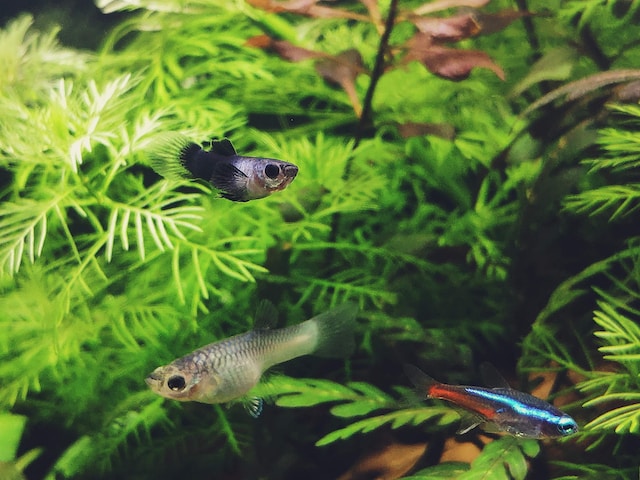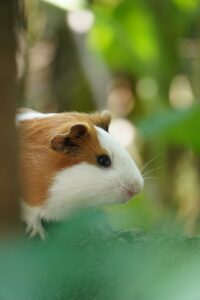
5 Common Mistakes Tetra Fish Owners Make and How to Avoid Them
Contents
Introduction
Tetra fish are a great addition to any home aquarium, but they can be sensitive to the water conditions in your tank. If those conditions aren’t right, you might see algae growing on the glass or other signs that there’s something wrong with their environment. In this article, we’ll go over 5 common mistakes tetra fish owners make and how to avoid them.
Putting Too Much Tetra into the Tank
A common mistake that new Tetra fish owners make is putting too many of them in their tank. While it may seem like a good idea to fill your aquarium with as many tetras as you can fit, this will actually be detrimental for your fish and prevent them from thriving. Tetras need space to swim and breathe, so overcrowding them will cause them stress and lead to poor health. Therefore, it is recommended that you only use one Tetra per 10 gallons of water (about 3 liters).
Stocking Too Much Tetra
Stocking too many tetras is one of the most common mistakes that new fish owners make. If you have a small tank, it’s best to stick with one or two varieties of tetra and maybe another peaceful species if you want more than just a couple fish in your tank.
If your aquarium is large enough (50 gallons), then stocking up on some of the more aggressive Tetras can be done without much issue–especially if they’re kept in schools.
For example: The Black Phantom Tetra will get along with other Black Phantoms just fine but may try to chase other types of fishes away from their territory or eat them if given the chance!
Not Feeding Tetra Enough
Tetras are small fish and therefore need to be fed smaller amounts of food. The best way to determine how much to feed your tetras is by observing their behavior. If the fish are active, then they are eating enough; if not, then you need to increase their diet or else risk stunting their growth.
Feeding Tetra at least once a day will help them stay healthy and grow quickly (especially if you’re using frozen foods). It’s also important that you only give them as much food as they can eat within 3 minutes because otherwise they will simply spit out whatever remains in their mouths later on when they realize there isn’t anymore coming!
There are many types of foods available on the market today including flakes, pellets and freeze-dried packets which come in various flavors like shrimp & vegetable medley or salmon & fruit salad (just kidding). However do note that these alternatives may contain additives such as preservatives so always check labels carefully before purchasing any product off store shelves!
Not Cycling the Aquarium
Cycling the aquarium is a vital step in ensuring your tetra fish are happy and healthy. If you don’t cycle the aquarium, it can cause ammonia levels to spike–and that’s not good for anyone!
To cycle an aquarium, you simply need to do two things: add plants and fish waste (from other fish) into your tank and let nature take its course. As these materials break down and decay, they release nitrites into the water which then convert into nitrates over time. Once all of these processes have been completed successfully, then it’s safe for you to add additional fish into your tank without causing any harm or stress on them or yourself!
Not Keeping Your Water at Optimum Levels
Water quality is important. Tetras are a freshwater fish, so you’ll need to make sure that your aquarium has the right water parameters to keep them healthy and happy. Here are some of the most common things people get wrong:
- Water temperature – Tetras prefer temperatures between 72 degrees Fahrenheit (22 degrees Celsius) and 78 degrees Fahrenheit (26 degrees Celsius). If you keep your tank warmer than this range, it can stress out your tetras or even kill them outright!
- pH levels – Most good quality tap water will have a neutral pH level of 7-8; however many people don’t realize this means their tap water isn’t suitable for keeping tetra fish because it’s too acidic or basic! You’ll need either an aquarium buffer solution or distilled water in order to raise/lower your pH levels if necessary before adding any fish into their new homes.* Hardness levels – Tetras like their environments soft enough so they won’t get scratched up by sharp rocks or gravel while swimming around but firm enough so they don’t sink into mud at any moment either.* Nitrate levels – Tetra populations thrive best when there aren’t too many nitrates present within their tanks’ waters–so make sure not only do YOU know how much nitrogen exists inside YOUR OWN home but also choose foods carefully based on what kind NITRATES contain since these two factors combined determine whether one should buy something versus another product instead!
Keep your aquarium healthy for your tetras
You should keep the temperature of your aquarium at least 2 degrees warmer than the room temperature. This will help to keep your tetras healthy, and it also reduces stress on them. Your fish will be less likely to get sick, and they’ll be able to live longer in their environment.
You should test your water regularly, especially if you have an aquarium that’s over 10 gallons or so in size (the bigger the tank, the more often you need to test). If necessary, replace some of the water with fresh water from time-to-time as well; this helps keep things clean and clear!
Conclusion
If you’re new to aquariums, it can be easy to make mistakes. But the best way to avoid these pitfalls is by doing your research and getting expert advice before making any decisions. By taking the time to learn about what’s involved in setting up an aquarium, you’ll be able to avoid costly errors and ensure that your fish have a healthy environment in which they can thrive!



Average Rating